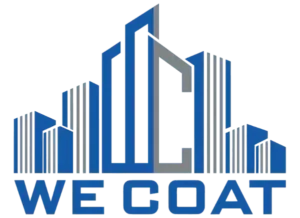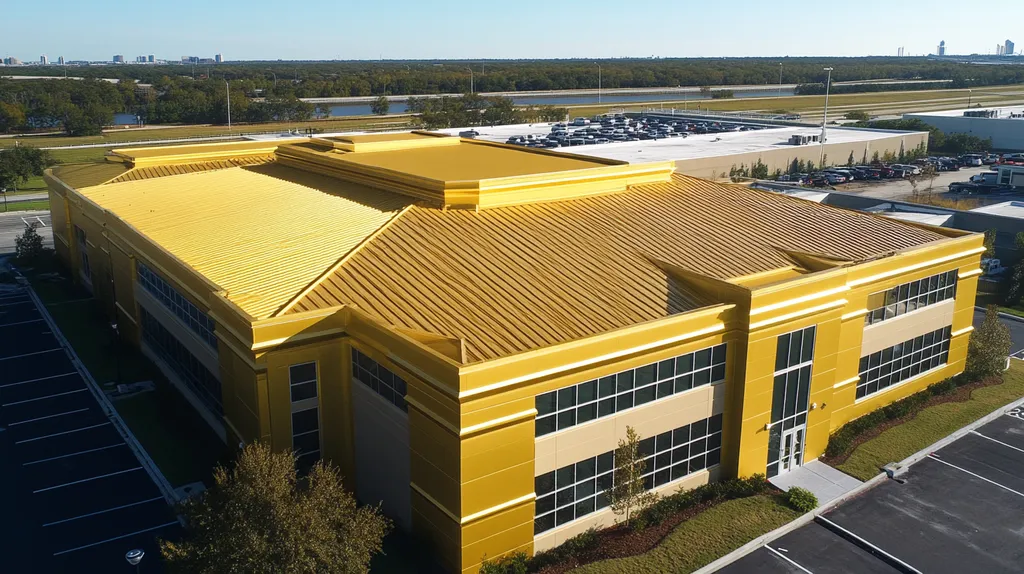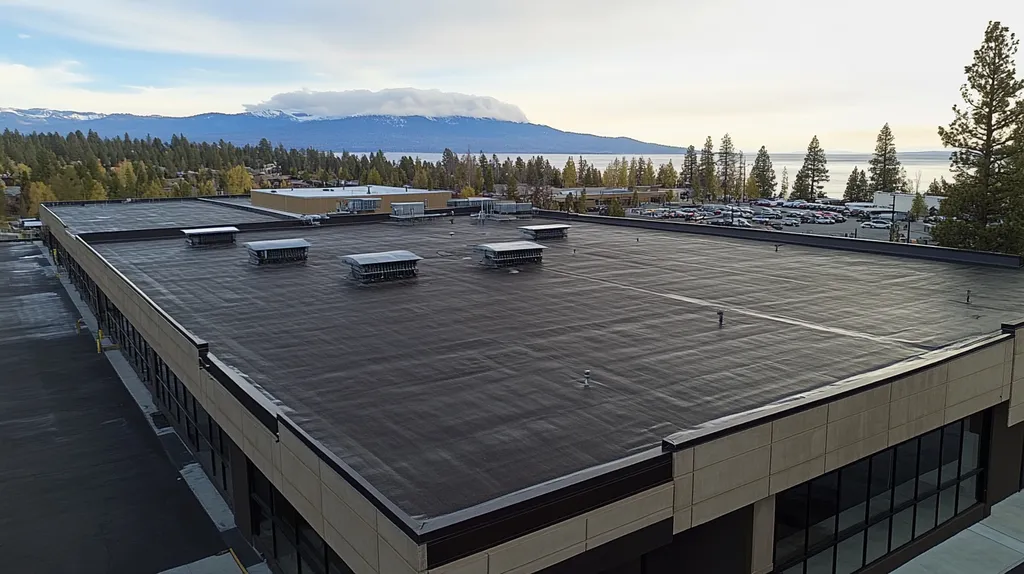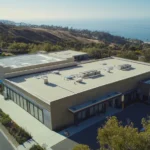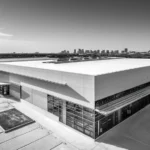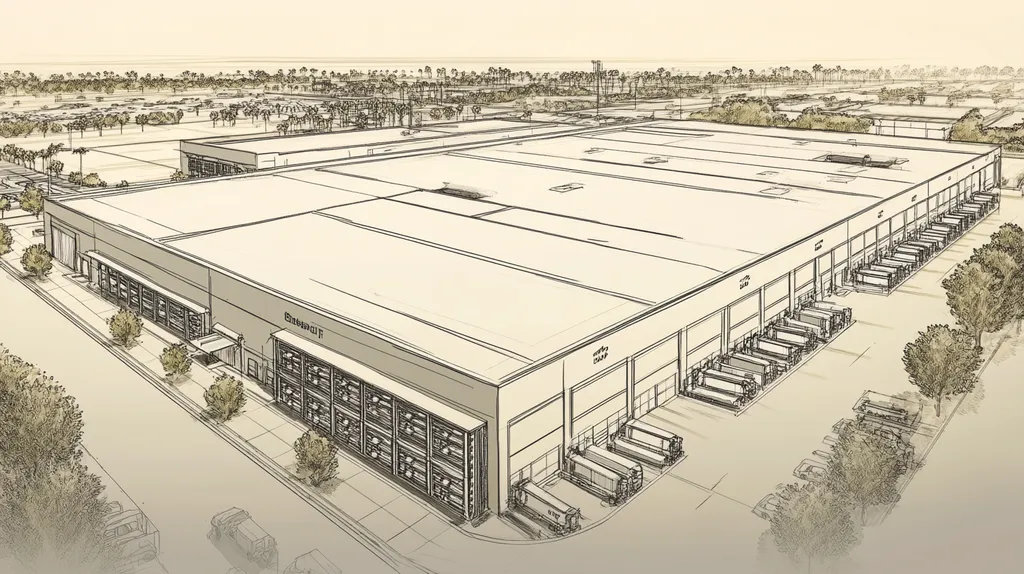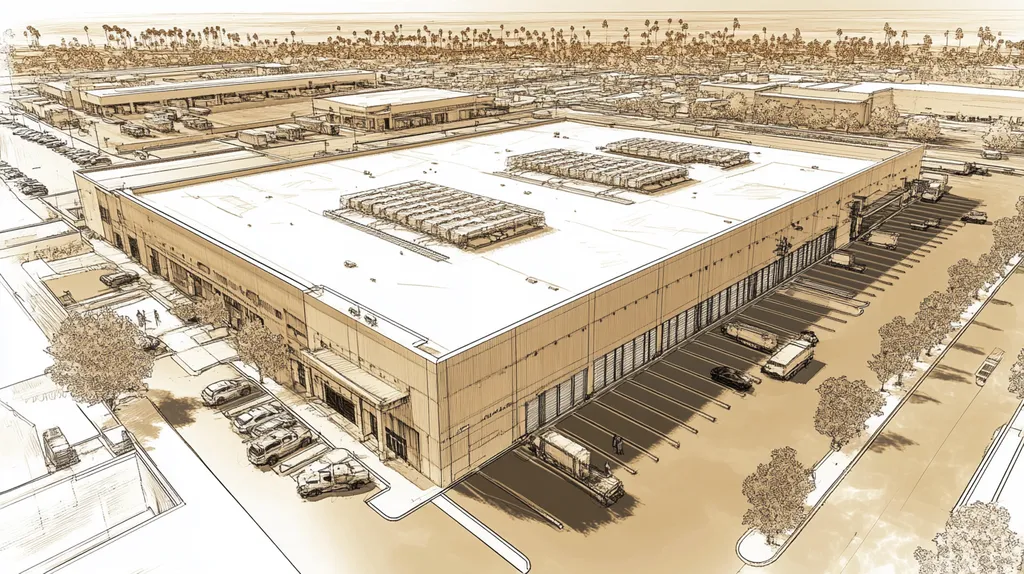Rising energy costs and tightening environmental regulations have made proper commercial roof insulation more critical than ever. Studies show that ineffective insulation can increase heating and cooling expenses by up to 40%, costing businesses thousands in preventable losses each year.
For facility managers, evaluating roof insulation requires careful consideration of multiple factors: from thermal performance and moisture resistance to code compliance and long-term durability. Recent industry data indicates that over 70% of commercial buildings have suboptimal insulation.
This comprehensive guide provides facility managers with an actionable framework for assessing insulation effectiveness, managing risks, and implementing cost-saving solutions across their roofing systems.
SECTION 1: PERFORMANCE FACTORS
Evaluating commercial roof insulation is a critical step in ensuring a building’s stability and efficiency. Poor insulation can lead to energy waste, ultimately costing facility managers significant amounts each year. For example, buildings with inadequate insulation can lose over 20% of their heating or cooling energy, impacting both the budget and occupant comfort. Understanding essential performance factors such as R-value, moisture resistance, and overall energy efficiency is key to making smart roofing decisions.
Assessing R-Value and Thermal Resistance
The R-value is a vital measurement of a material’s ability to resist heat flow, serving as a cornerstone for effective insulation. Higher R-values correspond to better thermal performance, keeping indoor environments comfortable and stable. In commercial settings, selecting insulation with an appropriate R-value can lead to significant reductions in energy consumption.
For instance, buildings with an R-value below 20 may experience considerable temperature fluctuations, which can increase reliance on HVAC systems. This not only spikes energy bills but can also affect occupants’ comfort. Facility managers should determine the specific thermal performance needed for their particular climate zone.
As energy codes tighten, investing in insulation with higher R-values is crucial. Non-compliance may lead to penalties and increased operational expenses in the long run.
Key Action Items
Evaluating Moisture and Durability
Moisture poses a serious threat to insulation effectiveness and can lead to structural issues within the roof system. Without thorough moisture evaluation, insulation risks degradation, leading to thermal bridging and climbing energy costs. Therefore, it is crucial to assess the durability of insulation materials to ensure longevity and performance.
In regions with high rainfall or humidity, facility managers should prioritize using materials that resist moisture effectively. Using insulation options such as fiberglass or foam board can greatly reduce the risk of mold and decay.
Regular inspections also play a critical role in identifying and managing moisture problems early on. Procrastination in addressing moisture can lead to extensive damage, resulting in costly repairs or full insulation replacements.
Key Action Items
Impact on Energy Efficiency
The quality of roof insulation has a direct impact on a building’s energy efficiency. Effective insulation minimizes heat transfer, allowing indoor temperatures to remain stable and reducing heating and cooling expenses. This enhances occupant comfort while also contributing to a more sustainable facility profile.
Buildings that boast superior insulation can achieve energy savings of up to 30%, translating into substantial annual savings. For example, a facility that improves its insulation could see energy bills decrease by $10,000 each year, providing additional funds for operational needs.
Furthermore, energy-efficient buildings are often eligible for green certifications, enhancing marketability. This can attract potential tenants or buyers interested in lower operating costs and a commitment to environmental responsibility.
Key Action Items
SECTION 2: FINANCIAL CONSIDERATIONS
Making informed decisions about roof insulation is vital for the financial success of commercial properties. As energy costs rise and sustainability standards tighten, understanding the financial implications of insulation becomes even more urgent. Facility managers must navigate the balance between initial investments and long-term savings, making decisions that positively affect operational budgets. This section examines key financial factors in assessing roof insulation, including installation costs, potential returns on investment (ROI), and the impacts of maintenance.
Initial Installation Costs and Budgeting
The upfront costs associated with roof insulation can differ widely based on the material and thickness selected. Common options such as fiberglass, foam board, and spray foam present various pricing structures, necessitating careful consideration. Importantly, facility managers should account not just for material expenses but also for labor costs, which can increase with the complexity of the installation process.
A successful insulation budget needs to factor in long-term energy savings alongside initial expenditures. Quality insulation can reduce HVAC energy consumption by as much as 40%, resulting in enhanced budget efficiency. By understanding that initial investment can lead to lowered operational costs, facility managers can make smarter decisions about insulation.
Additionally, seeking local incentives or rebates for energy-efficient upgrades can lessen financial burdens and encourage investment in superior insulation. Choosing experienced roofing contractors for installation ensures that the job is done correctly, maximizing insulation performance and value from initial expenses.
Key Action Items
Long-Term Cost Savings and ROI
Investing in effective roof insulation translates into significant long-term savings and financial returns. Buildings equipped with superior insulation often see markedly reduced energy bills, leading to improved budget management. Research indicates that each dollar saved on heating and cooling can potentially yield returns of three times the original investment.
For instance, consider a warehouse facing $12,000 annually in heating costs due to poor insulation. Upgrading to proper insulation could lower these expenses by half, resulting in annual savings of $6,000. Over ten years, that adds up to $60,000—an impressive return on investment.
Furthermore, well-insulated roofs aid in maintaining a comfortable climate, which may boost worker productivity and reduce employee turnover. Facility managers should assess energy savings alongside other operational benefits to evaluate the full scope of ROI. Factoring in enhanced property values further supports the justification for initial spending.
Key Action Items
Maintenance and Replacement Expenses
Opting for high-quality insulation can substantially minimize maintenance and replacement costs over time. Effective insulation reduces moisture infiltration, which is a key factor in roof deterioration. Regular maintenance checks are vital but tend to be less costly when the insulation performs well.
On the contrary, roofs with inadequate insulation often require frequent repairs, especially from water damage, leading to budget constraints. Proper insulation can prolong roof lifespans, saving money on both immediate and future replacement costs, significantly benefiting overall facility management.
Proactive maintenance strategies can help prevent costly repairs or premature replacements. Facility managers should implement regular inspections to ensure the insulation’s integrity, which is far less expensive than dealing with the consequences of neglecting it.
Ultimately, investing in high-quality insulation systems is a strategic move that protects finances from unexpected repair costs and extended downtimes. By prioritizing insulation in long-term budgeting, managers can better align their financial strategies with sustainable operations.
Key Action Items
SECTION 3: COMPLIANCE REQUIREMENTS
Ensuring proper insulation in commercial roofs is not merely a smart investment; it is a legal necessity. Failing to meet compliance standards can result in rising energy costs, hefty fines, and even safety risks for occupants. This section explores key compliance aspects, such as national standards, local regulations, and green building certifications that are essential for facility managers to understand.
Meeting ASHRAE and IECC Standards
ASHRAE (American Society of Heating, Refrigerating and Air-Conditioning Engineers) and IECC (International Energy Conservation Code) are the authority on insulation effectiveness for commercial roofs. Their guidelines not only help enhance energy efficiency but also improve occupant comfort levels. Adhering to these standards can lead to reduced utility bills and overall better building performance.
For example, ASHRAE specifies recommended R-values based on climate zones, which can greatly influence heating and cooling costs. Facility managers should ensure their roofing systems comply with these recommendations. Regularly reviewing insulation performance against ASHRAE and IECC guidelines can help prevent compliance issues from arising.
Documentation is critical; keeping thorough records of compliance can be invaluable during inspections or when pursuing energy efficiency incentives. Staying informed about these standards is essential for effectively evaluating commercial roof insulation and avoiding unnecessary costs.
Key Action Items
Adherence to Local Building Codes
Local building codes are unique and can significantly impact insulation practices. These codes are frequently updated to reflect the specific environmental and geographical characteristics of the area. Facility managers must be proactive in understanding local codes to avoid costly adjustments after installation.
Many local codes set minimum insulation levels and specific fire safety requirements. Some municipalities may impose stricter regulations than federal standards, focusing on particular environmental goals or market conditions. Keeping in touch with local building officials can help facility managers stay informed about relevant regulations.
Employing contractors familiar with local codes is also vital to ensure roofing systems achieve regulatory compliance. Experienced contractors can help navigate the complexities of local building codes and install compliant solutions that enhance performance.
Key Action Items
Green Building Certifications and Regulations
Green building certifications, like LEED (Leadership in Energy and Environmental Design) and Energy Star, demand stringent adherence to insulation and sustainability standards. These certifications not only promote energy efficiency but also increase property value and attract environmentally-conscious tenants.
Utilizing sustainable insulation materials can help buildings qualify for these certifications. Using recycled materials or options with a lower environmental impact contributes to a property’s eco-friendliness. Evaluating insulation choices against certification standards should be a priority for facility managers.
Additionally, many local governments offer incentives for achieving green certifications, such as tax breaks, grants, or streamlined permitting processes, potentially generating savings for property owners. With sustainability becoming more crucial in business practices, compliance with green regulations will increasingly provide competitive advantages.
Key Action Items
SECTION 4: RISK MANAGEMENT
Effective risk management in commercial roofing is essential to safeguard against leaks and potential water damage. Water intrusion is a leading cause of property damage, resulting in millions spent on repairs each year. Facility managers must diligently evaluate roof insulation, focusing on vulnerabilities to avoid costly repercussions. This section outlines key risk factors: identifying leaks, ensuring fire safety, and managing structural concerns.
Identifying Potential Leak and Water Damage
Leaks and water damage can escalate rapidly, leading to structural deterioration and exorbitant repairs. Regular inspections of roof insulation are crucial to catching potential weaknesses early. A compromised roofing system can foster mold, posing health risks and incurring costly remediation expenses.
Implementing moisture sensing systems can help facility managers detect leaks at their inception. Taking these proactive steps not only protects the bottom line but also prevents disruptions to business operations. Delayed leak detection often results in extensive damage, potentially necessitating complete roof replacement.
The link between insulation and leak prevention is vital. Properly insulated roofs regulate temperatures and manage moisture effectively, diminishing the likelihood of leaks. This vigilance not only safeguards property but also enhances occupant satisfaction.
Key Action Items
Fire Resistance and Safety Compliance
Fire safety stands as a crucial element of risk management in commercial roofing. Insulation materials exhibit varying degrees of fire resistance, directly impacting building safety. Non-compliance with fire safety codes can lead to severe legal and financial repercussions.
Choosing insulation materials with suitable fire ratings for specific applications is essential to minimize fire hazards. Routine assessments can ensure existing insulation continues to comply with safety standards, protecting both lives and assets.
Awareness of fire risks linked to roofing systems guides maintenance practices. Keeping emergency exits clear and managing flammable debris accumulation are paramount for safety. A robust fire prevention strategy significantly enhances the well-being of both tenants and the facility as a whole.
Key Action Items
Mitigating Structural and Load Risks
Maintaining structural integrity is vital in commercial roofing. As insulation ages, its effectiveness may wane, impacting a roof’s load-bearing capacity. Understanding weight limits and load distribution is critical for ensuring roof stability.
Regular load assessments should be conducted to identify potential risks from accumulated snow, debris, or HVAC equipment. Neglecting these evaluations can lead to severe structural failures and safety concerns for occupants.
Investing in quality, lightweight insulation can bolster long-term structural integrity. This choice not only enhances safety but also complies with building codes, reducing overall roof load and contributing to energy efficiency.
Key Action Items
SECTION 5: OPERATIONAL PROCEDURES
Establishing efficient operational procedures for commercial roof insulation is essential for maximizing energy savings and preventing costly damage. Facility managers must prioritize routine inspections and maintenance to protect assets and ensure peak performance. According to the U.S. Department of Energy, effective insulation can lower energy costs by as much as 30%. Ignoring these essential practices can result in moisture problems, structural damage, and rising energy expenses. This section outlines fundamental operational procedures, including inspection and maintenance schedules, installation best practices, and repair protocols.
Inspection and Maintenance Schedules
Conducting regular inspections of roof insulation is critical for identifying and addressing potential issues before they worsen. Facility managers should implement a biannual inspection schedule, ideally timed for spring and fall. These inspections should evaluate insulation condition, checking for moisture intrusion, pest infestations, and signs of compression. Additionally, seasonal maintenance tasks like clearing debris from drainage systems can significantly lower associated risks.
Keeping thorough documentation of inspection results is crucial. A detailed log enables facility managers to track insulation performance over time, yielding insights into trends and recurring issues that inform decisions on necessary repairs or replacements.
Engaging a qualified roofing contractor for inspections enhances precision and effectiveness. These trained professionals are skilled at identifying subtle issues that might escape notice, ensuring that potential problem areas receive timely attention.
Furthermore, training maintenance staff in basic inspection protocols empowers them to recognize early warning signs. This proactive involvement minimizes long-term risks and helps extend the lifespan of the roofing system.
Key Action Items
Installation Methods and Best Practices
The methods used for insulation installation play a key role in determining overall performance and efficiency. Facility managers must ensure insulation materials are selected based on the specific needs of their buildings. Common types include fiberglass, foam board, and spray foam, each offering distinct thermal resistance properties.
Employing proper installation techniques, such as confirming airtight seals, is vital to prevent air leaks that undermine energy efficiency. Even slight gaps can lead to significant thermal losses, adversely affecting heating and cooling expenses.
Following manufacturer guidelines during installation is equally crucial. Each product has specific requirements that must be met to ensure optimal performance. Compliance not only reduces the risk of warranty problems but also prevents long-term issues.
Training the installation teams on best practices and the compatibility of materials ensures the effectiveness of the insulation strategy. Staying informed about technological advancements and up-to-date regulations can further enhance overall insulation practices.
Key Action Items
Repair and Replacement Protocols
Defining clear protocols for roof insulation repair and replacement is essential for maintaining system integrity. Prompt action is required when issues like mold growth or degradation are discovered during inspections, as delays can lead to further damage and increased costs.
When planning for replacement, facility managers should consider the insulation’s age, its performance, and any environmental factors that contribute to its decline. Investing in high-quality materials often yields long-lasting benefits and minimizes future maintenance costs.
During repair or replacement processes, it’s crucial to choose methods that allow existing insulation to work effectively with new materials. This approach enhances thermal performance and prevents issues due to bridging which can lead to energy loss.
Working with qualified contractors ensures that repairs align with industry standards, thereby reducing future risks. Documenting all repairs and replacements is necessary for maintaining comprehensive maintenance records that support informed decision-making in asset management.
Key Action Items
SECTION 5: OPERATIONAL PROCEDURES
Efficient operational procedures for commercial roof insulation are crucial in maximizing energy efficiency and minimizing costly damages. Facility managers must prioritize routine inspections and maintenance to safeguard assets and ensure peak performance. The U.S. Department of Energy estimates that effective insulation can lower energy costs by as much as 30%. Neglecting these responsibilities can lead to moisture issues, structural damage, and skyrocketing energy bills. This section will cover essential operational procedures, including inspection schedules, installation best practices, and repair protocols.
Inspection and Maintenance Schedules
Regular inspections of roof insulation are vital for identifying potential issues before they escalate. Facility managers should implement a biannual inspection schedule, ideally in spring and fall. These inspections must evaluate the insulation’s condition, looking for moisture intrusion, pest infestations, and compression. Seasonal maintenance, such as clearing debris from drainage areas, is also essential to minimize risks.
Detailed documentation of inspection findings is crucial. Maintaining a log allows facility managers to track insulation performance over time. Insights from this data can highlight trends and recurring issues, aiding in future decisions about repairs or replacements.
Involving a qualified roofing contractor in inspections improves accuracy. These trained professionals are adept at detecting subtle issues that might be overlooked. By ensuring timely attention to problem areas, they help maintain the system’s integrity.
Key Action Items
Installation Methods and Best Practices
The methods used for insulation installation significantly affect performance and efficiency. Facility managers must select insulation materials tailored to their buildings’ specific requirements. Common options include fiberglass, foam board, and spray foam, each offering distinct thermal resistance benefits.
Ensuring proper installation techniques is critical; achieving airtight seals prevents air leaks that can diminish energy efficiency. Even minor gaps can cause significant thermal loss, increasing heating and cooling costs. Precision in installation is vital for optimized insulation performance.
Additionally, adherence to manufacturer guidelines is crucial during installation. Each product has specific criteria that must be met to ensure effective performance. Compliance can help avoid future warranty issues and extended problems.
Key Action Items
Repair and Replacement Protocols
Clear protocols for roof insulation repair and replacement are vital for maintaining system integrity. Prompt action is necessary when issues like mold growth or insulation degradation are discovered during inspections. Delays can lead to further damage and rising costs.
Facility managers should consider the insulation’s age and performance when planning replacements. Evaluating environmental factors contributing to deterioration is also important. Investing in high-quality materials can yield long-lasting benefits and lower future maintenance costs.
During repairs or replacements, selecting methods that integrate existing insulation with new materials is crucial. This strategy enhances thermal performance and prevents energy loss due to bridging issues.
Key Action Items
Looking Ahead
With energy costs continuing to rise at 5-7% annually, effective commercial roof insulation has never been more critical for facility operations and sustainability.
Studies show that up to 40% of a building’s heating and cooling expenses stem directly from inadequate roof insulation, translating to tens of thousands in preventable losses each year.
Facility managers who implement comprehensive insulation evaluation protocols see an average 30% reduction in energy costs while extending roof lifespans by 5-10 years.
Success requires a balanced approach incorporating proper assessment tools, compliance with evolving regulations, and strategic maintenance planning.
As environmental standards tighten and energy prices climb, those who prioritize insulation effectiveness today will be better positioned to manage operational costs and meet sustainability goals tomorrow.
FREQUENTLY ASKED QUESTIONS
Q. What performance factors should I consider for commercial roof insulation?
A. When evaluating commercial roof insulation, focus on R-value, moisture resistance, and energy efficiency. A high R-value indicates better thermal performance, crucial for controlling energy costs. Moisture-resistant materials prevent structural damage, while efficient insulation reduces reliance on HVAC systems, ultimately ensuring tenant comfort and lowering operational expenses.
Q. How can I balance costs when evaluating industrial roof insulation?
A. Balancing costs involves considering both initial installation prices and potential long-term savings. While higher-quality materials may demand more upfront investment, they can reduce energy bills and enhance the building’s value over time. Research available incentives for energy-efficient upgrades to further offset costs, making informed budgeting decisions easier.
Q. What compliance requirements should I know about for commercial roofs?
A. Be aware of ASHRAE and IECC standards, which guide insulation effectiveness. Compliance with local building codes is also vital, as they often reflect regional environmental needs. Understanding green certification requirements, such as those from LEED, is crucial for staying competitive and potentially benefiting from incentives.
Q. How do I identify leaks and prevent water damage in commercial roofs?
A. Regular inspections of roof insulation are essential for identifying weak spots that may lead to leaks. Installing moisture detection systems helps catch issues early, preventing extensive water damage. Proper insulation can also regulate temperature and moisture levels, significantly reducing leak risks and enhancing overall building longevity.
Q. What operational procedures should I follow for commercial roof maintenance?
A. Establish a regular inspection schedule, ideally biannually, to assess insulation quality and address potential issues. Focus on maintenance tasks like clearing drainage systems and documenting inspection results to inform future actions. Engage qualified contractors for thorough assessments, ensuring efficient operations and prolonging the life of your roofing system.
Q. What are the best installation practices for roof insulation?
A. Select insulation materials based on your building’s specifications and ensure airtight seals during installation. Follow manufacturer guidelines to maximize performance and prevent future issues. Regularly train installation teams on best practices to keep up with technological advancements and optimize insulation efficacy.
Q. How do I manage replacement and repair protocols for roof insulation?
A. Develop clear protocols for addressing insulation issues promptly, especially if mold or degradation is discovered. Assess insulation age and performance during replacements. Engaging qualified contractors for repairs ensures compliance with industry standards, reducing risks and maintaining the integrity of your roofing system.
